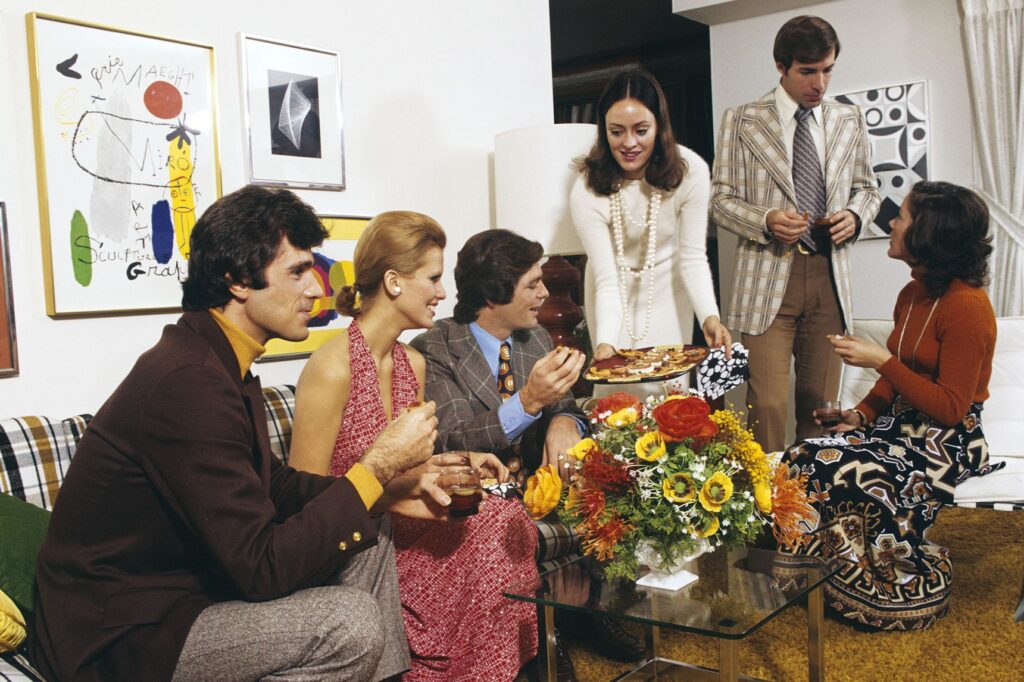By Susan Pinker
www.wsj.com/articles/friends-review-people-you-can-count-on-11646954832
One of the many unsettling effects of the pandemic is the way it winnowed out our real-world friendships. The first to go were the casual relationships, the people you saw every day at the office or gym, and with whom you formed a warm bond over the years. When public spaces closed down, these friendships vanished. Next to go were the longstanding friends you might have invited over for a meal a few times a year. You might have gone to a movie or a concert together, but you wouldn’t ask them for a loan or to drive you to the emergency room. Those favors were reserved for the most intimate relationships—immediate family members and perhaps one or two very close friends.
This core group can withstand almost any insult, including distance, disputes and even the strictures and losses of a pandemic. While my core group stood firm, I watched other relationships fall away like dead leaves on my houseplants. Given the ease of a call and the ubiquity of social media, I wondered why this was happening.
Robin Dunbar, an emeritus professor of evolutionary psychology at Oxford University, has an answer in “Friends: Understanding the Power of Our Most Important Relationships.” Published in the U.K. a year ago and written before the pandemic, many of its insights are uncannily apt for this moment.
Based on his long-ago research into small hunter-gatherer societies, Ethiopian gelada baboons, and more recently, meetings, cellphone logs and social-media posts, Mr. Dunbar writes that friendships sift themselves into concentric circles, like a bull’s-eye. The innermost ring comprises our closest friends and family members. This “support clique” numbers around five people and is so named “because it consisted of all the people who would unstintingly give you support or help if you needed it,” he writes. The next ring, at 15 people, forms what he calls the “sympathy group,” which he defines as “the people you invite round for a quiet dinner or an evening at the pub.” Then comes a circle of 50 “good friends,” and on and on in multiples of three, with 150—the eponymous Dunbar’s Number—marking the upper limit of how many friends you can have. Eventually we reach the ring of 500, which comprises acquaintances you know through work or a social group, but who are “unlikely to bother turning up to your funeral.” Ouch. Those folks would certainly disappear in a pandemic, as I discovered. But what about those in the smaller circles?
In order to survive and thrive, those friendships need to be lubricated by interacting in-person, as I found during my own research into social bonds. Yet as Mr. Dunbar’s book illustrates so well, the time we have to sustain those relationships is finite. He didn’t say as much but we have even less of this currency to spend during the pandemic, when the architecture of our days revolved around avoiding social contact, not fostering it.
The brute math of time distribution is pervasive among primates, Mr. Dunbar shows, illustrating the point with the way gelada baboons allocate their psychological resources. Earlier in his career he observed that a female baboon would help another female in distress in exact proportion to the amount of time they had spent grooming each other. Humans, too, decide who is important to them and dole out their time with others “in ways that reflect their value.” From data collected from women’s social networks in Britain and Belgium, Mr. Dunbar concludes that “we devote about 40% of our total social time to the five people in the innermost layer and a further 20% to the 10 people that make up the rest of the next layer.” With that small group demanding most of our attention, the remaining 135 people get what’s left over, “about half a minute a day.”
If that seems like a clinical appraisal of the nature of friendship, it is. For a guy who has devoted his career to studying social contact, Mr. Dunbar doesn’t write about feelings much. He defines friends as “the sort of people you would like to spend time with. . . . You know their names—not just their first names, but their surnames as well. You know where they live (they are in your address book) and you know all about their immediate family.” That summary applies to my hair stylist, my immediate neighbors and to the carpenter who built my back deck. Lovely people all, they are neither in my sympathy group nor in my “good friends” group. They’re members of the 500 club, people who, Mr. Dunbar predicts, wouldn’t come to my funeral. And yet it is precisely these weaker bonds that, excluding genes, are the most potent predictors of longevity.
Why is that? We need to feel we belong somewhere. This yearning has evolutionary roots—lone travelers didn’t last long on the savannah, as Mr. Dunbar points out. I wish he’d written more about that feeling of belonging and reciprocity that makes having friends, in each of those concentric circles, one of the most critical components of leading a long and happy life. He might have gone further into the way our friends become a part of us, and bits of us live somewhere in them too. But Mr. Dunbar is a scientist; he delineates the data about friendship—not its guts. In fact, this book is essentially a celebration and review of Mr. Dunbar’s long and illustrious career in social science, with the spotlight firmly placed on his own research, while the work of others is either in the background, or absent.
If you are looking for an up-to-date book on the science of friendship—one written by the éminence grise of social connection—this is it. But if you’re interested in the beautiful mess of real friendship, you’ll have to keep looking.


